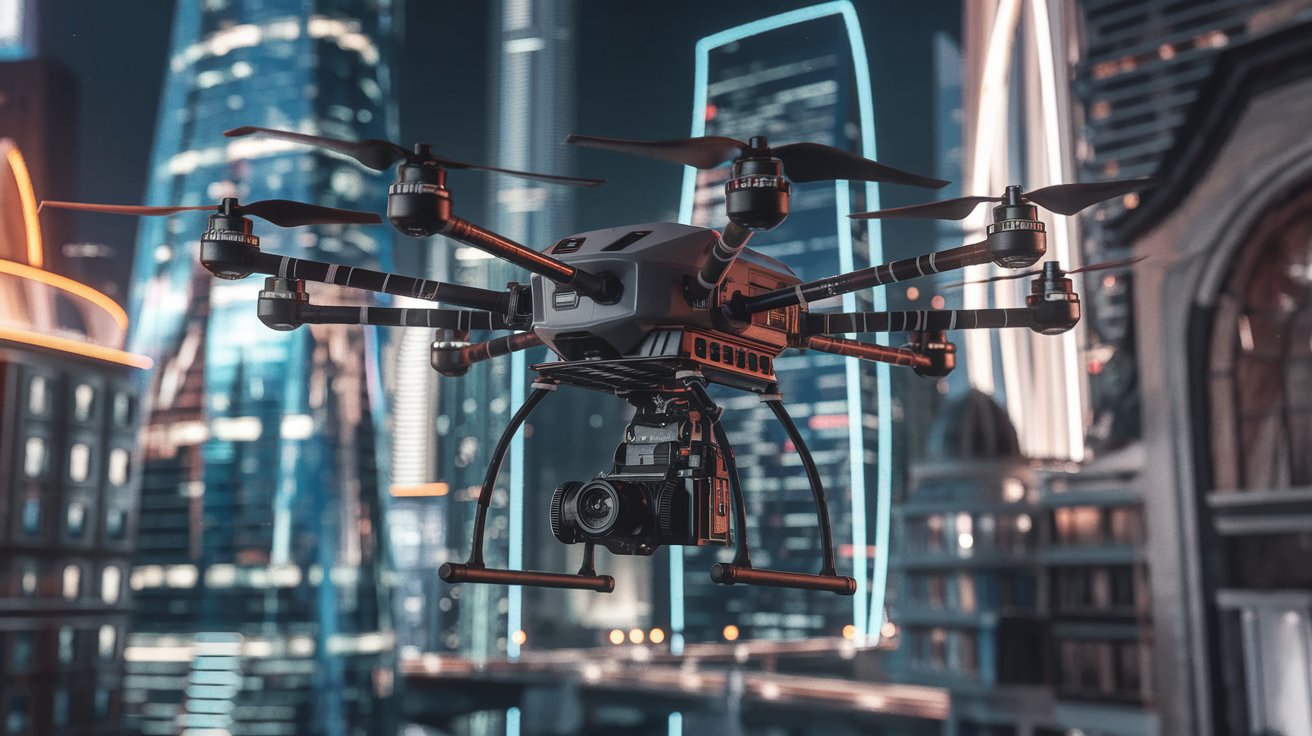Racing drones have gained immense popularity in recent years, captivating drone enthusiasts and adrenaline seekers alike. Whether you’re a beginner looking to dive into the world of drone racing or an experienced pilot looking to upgrade your gear, this guide covers everything you need to know about racing drones. This post will explore what racing drones are, their components, how to choose the right one, and essential tips for flying like a pro.
What is a Racing Drone?
A racing drone is a specially designed quadcopter for speed, agility, and precision control. Racing drones prioritize performance, unlike cameras, which focus on capturing high-quality footage. They’re used in competitions where pilots navigate challenging obstacle courses at high speeds, requiring quick reflexes and expert maneuvering skills.
The primary goal of racing drones is to achieve maximum speed while maintaining stability and control, making them a unique category in the drone market.
Components of a Racing Drone
Understanding the critical components of a racing drone is essential, as each part plays a crucial role in its performance. Below are the core elements that make up a racing drone:
- Frame: The frame provides the structure and holds all other components together. Racing drone frames are typically made from lightweight yet durable materials like carbon fiber to minimize weight without compromising strength.
- Motors: High-speed brushless motors are used in racing drones to achieve the thrust needed for rapid acceleration. The motor’s KV rating (RPM per volt) determines the speed and torque.
- Propellers: Propellers are usually smaller and more aggressive, enabling quick maneuvers and faster speeds. Standard sizes range from 4-inch to 6-inch propellers.
- Flight Controller: The flight controller is the drone’s brain, processing inputs from the pilot and sensors to maintain stable flight.
- Electronic Speed Controller (ESC): The ESC controls the power supplied to the motors, enabling precise adjustments to achieve the desired speed and direction.
- Battery: Racing drones typically use LiPo (Lithium Polymer) batteries due to their high power-to-weight ratio, which is crucial for performance.
- Camera and Video Transmitter: For First Person View (FPV) racing, an onboard camera, and video transmitter send a live feed to the pilot’s goggles, providing a real-time view of the drone’s path.
How to Choose the Right Racing Drone
Selecting a suitable racing drone depends on various factors, such as your skill level, budget, and intended use. Here are a few pointers to consider when choosing a racing drone:
- Skill Level:
- Beginner: Opt for a ready-to-fly (RTF) model with everything you need to start racing.
- Intermediate: Consider a bind-and-fly (BNF) or plug-and-play (PNP) model, which requires assembly and customization.
- Expert: Custom-built drones offer the flexibility to choose each component based on your preference.
- Budget: Racing drones range from $100 to over $1,000, depending on the quality and performance. Determine your budget beforehand and stick to it to avoid overspending.
- Frame Size: Frame size determines the type of race the drone is suited for. The most common size is 5 inches, which provides a balance between speed and control.
- Flight Time: Racing drones usually have a flight time of 3-5 minutes due to the high power output. Opt for a drone that balances performance with adequate flight time.

Top 5 Racing Drones for 2024
To help you narrow down your options, here’s a list of the top racing drones currently available in the market:
- EMAX Hawk Pro
- Weight: 280g
- Flight Controller: F4
- Camera: Caddx Ratel 2 FPV Camera
- Why it’s great: Lightweight frame, smooth controls, and excellent durability.
- iFlight Nazgul5
- Weight: 340g
- Flight Controller: SucceX-E F4
- Camera: Foxeer Razer Mini
- Why it’s excellent: Perfect balance between performance and price.
- TBS Oblivion
- Weight: 270g
- Flight Controller: Colibri F4
- Camera: FPVision OSD
- Why it’s excellent: Integrated design, high-end components, and reliable performance.
- Diatone Roma F5
- Weight: 310g
- Flight Controller: Mamba F405 MK2
- Camera: Caddx Ratel 2
- Why it’s great: Excellent build quality and customizable features.
- BetaFPV HX115
- Weight: 50g
- Flight Controller: F4 1-2S AIO
- Camera: Caddx Ant Nano
- Why it’s excellent: Ultra-lightweight and ideal for indoor racing.
Tips for Flying Racing Drones Like a Pro
Mastering a racing drone takes practice and patience. Below are some essential tips to get you started on your journey to becoming a pro drone racer:
- Practice in a Simulator: Before taking your drone to the skies, practice in a drone racing simulator. It will help you get accustomed to the controls and reduce the risk of damaging your drone.
- Start with a Small, Indoor Drone: If you’re a beginner, start with a small, safe drone for indoor use. It’s less likely to cause damage and will help you build your flying skills.
- Learn FPV (First Person View) Flying: Racing drones usually fly using FPV goggles. Getting comfortable with FPV flying is crucial to navigating high-speed courses.
- Tune Your Drone’s PID Settings: PID (Proportional, Integral, Derivative) tuning is essential to ensure your drone responds accurately to your commands.
- Join a Local Drone Racing Club: Being part of a community will provide you with valuable insights, tips, and the opportunity to participate in races.
Safety Precautions for Racing Drone Pilots
Flying racing drones can be thrilling, but safety should always be a top priority. Here are some safety tips to keep in mind:
- Choose a Safe Flying Location: Ensure you’re flying in an area free of people, animals, and obstacles.
- Wear Protective Gear: If you’re racing in a group, wear safety goggles to protect your eyes from potential debris.
- Check Local Regulations: Always adhere to local drone regulations and obtain necessary permits.
- Inspect Your Drone Before Each Flight: Conduct a pre-flight check to ensure all components are securely attached and functioning properly.
The Future of Racing Drones
The racing drone industry is evolving rapidly with the introduction of new technologies such as AI-assisted flight, 3D mapping, and more advanced FPV systems. As these innovations continue to push the boundaries of drone racing, we can expect faster, more agile, and more competent drones in the future. If you’re passionate about drone racing, now is the perfect time to dive into this exciting hobby!
Final Thoughts
Racing drones offer an exhilarating experience that combines high-speed action, precision control, and the thrill of competition. Whether you’re looking to enter the world of drone racing or upgrade your existing setup, choosing a suitable drone and honing your skills is critical to success. Remember to prioritize safety, stay updated with the latest technologies, and, most importantly, have fun as you soar through the skies with your racing drone!
For more information on drone technology and innovations, check out Aitechmuz for the latest updates and resources.






Leave feedback about this